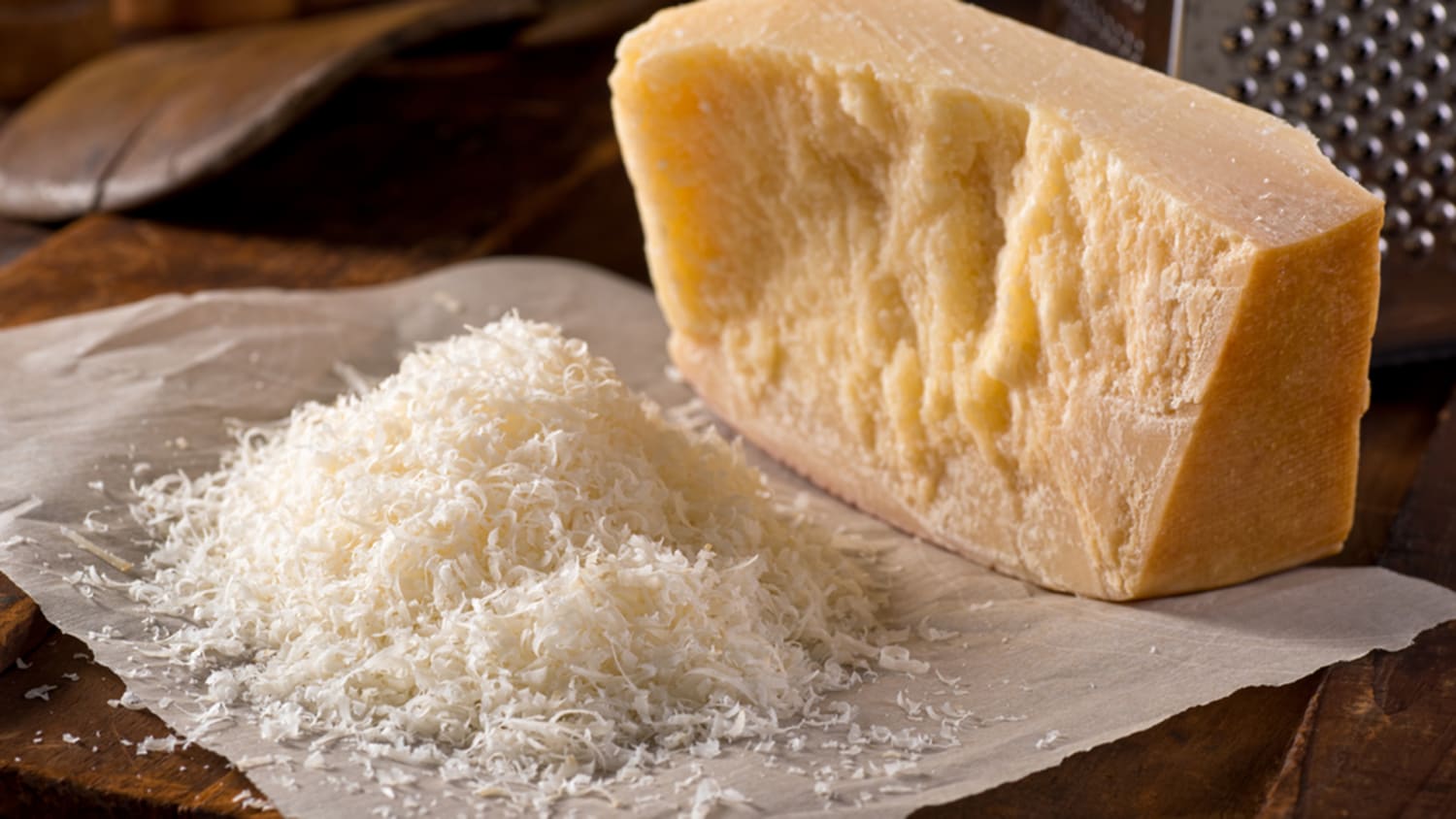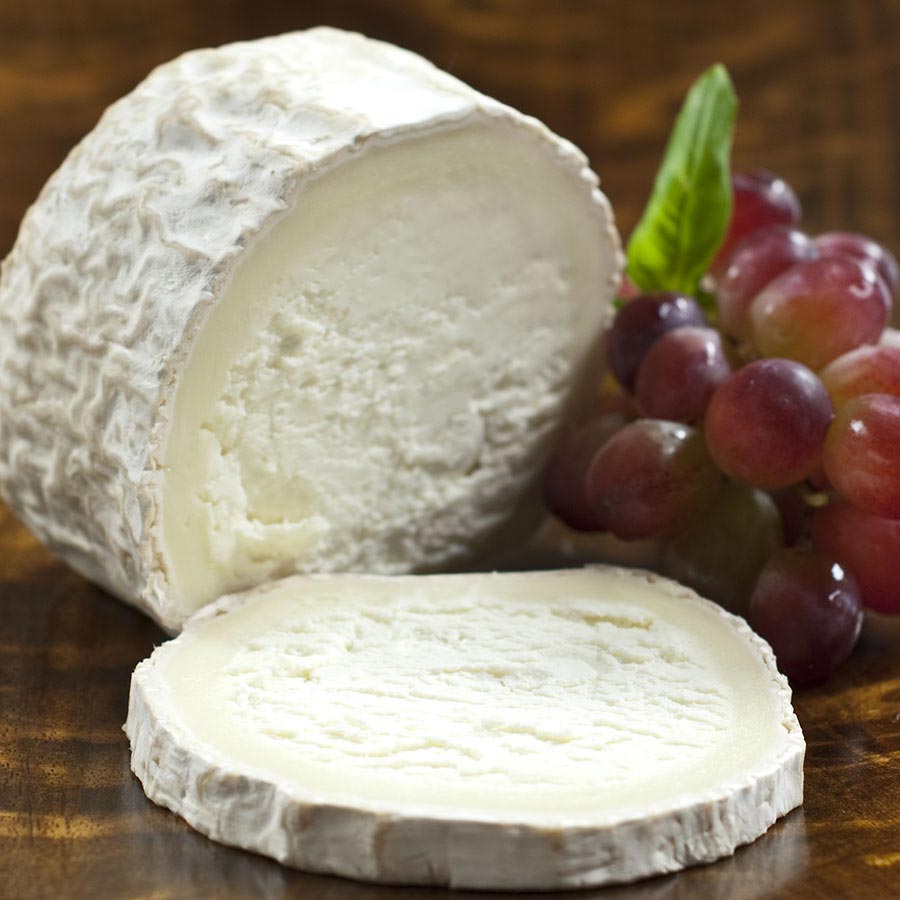Tag: Goat Cheese
Quick And Easy Appetizers Using Cheese
Chevre is a delicious, soft cheese that is so easy to make. All you need to do is add a packet of chevre culture to a gallon of goat’s milk, let it sit and then drain the curds in a butter muslin. You don’t always have to use goat’s milk either, you can easily use cow’s or sheep’s, using the same directions.
If you don’t feel like making your own Chevre, you can purchase it at Shisler’s Cheese House, our Goat’s is to die for!
Endive Stuffed With Goat Cheese

What You Need
1/3 cup coarsely chopped walnuts
2 tablespoons honey, divided
Cooking spray
1/4 cup balsamic vinegar
3 tablespoons orange juice
16 Belgian endive leaves (about 2 heads)
1/3 cup (1 1/2 ounces) crumbled goat cheese or blue cheese
16 small orange sections (about 2 navel oranges)
1 tablespoon minced fresh chives
1/4 teaspoon cracked black pepper
What To Do
Preheat oven to 350F
Combine walnuts and 1 tablespoon honey; spread on a baking sheet coated with cooking spray. Bake at 350F for 10 minutes, stirring after 5 minutes.
Combine 1 tablespoon honey, vinegar, and orange juice in a small saucepan.
Bring mixture to a boil over high heat, and cook until reduced to 3 tablespoons (about 5 minutes).
Fill each endive leaf with 1 orange section. Top each section with 1 teaspoon cheese and 1 teaspoon walnuts; arrange on a plate. Drizzle the vinegar mixture evenly over leaves, and sprinkle evenly with chives and pepper.
Credit: myrecipes.com/recipe/endive-stuffed-with-goat-cheese-walnuts
Bacon Wrapped Jalapenos With Chevre
What You Need
10 jalapenos
4 ounces soft goat cheese
7-8 slices low-sodium, center-cut bacon
What To Do
Preheat the oven to 400F.
Cut the bacon slices into thirds.
Slice the top off each jalapeno, then cut each jalapeno in half. Remove the stems and seeds.
Fill each half jalapeno with about one teaspoon of goat cheese. Wrap each jalapeno in a third of a slice of bacon.
Put the wrapped jalapenos on a baking sheet and cook for 15 minutes. Then, turn on the broiler and broil for an additional 5 minutes.
NOTE: Serving size is two poppers.
Credit: healthyrecipeecstasy.com/spice-up-your-super-bowl-sunday-goat-cheese-stuffed-bacon-wrapped-jalapenos/
Goat Cheese Stuffed Peppadews

What You Need
6 ounces soft goat cheese, room temperature
2 large garlic cloves, minced
2 tablespoons chopped fresh basil, chives, thyme, or other fresh herbs
2 tablespoons heavy cream or half-and-half (as needed)
salt and pepper, to taste
1 jar Peppadew peppers (about 20-30 peppers)
What To Do
In a bowl, combine goat cheese with garlic and herbs, stirring until evenly incorporated. Add cream as needed, 1 tablespoon at a time, to thin out filling if necessary (the amount needed will depend mostly on the softness of your goat cheese). The filling should be the consistency of buttercream frosting.
Season to taste with salt and pepper.
Fill each Peppadew with about 1/2 teaspoon of filling. I find it helpful to load the filling into a piping bag fitted with a 1/4-inch round tip, which makes it very easy to neatly fill each pepper completely full.
Serve immediately or refrigerate for up to 2 hours; let come to room temperature for 15 minutes prior to serving.
Credit: loveandoliveoil.com/2013/10/goat-cheese-stuffed-peppadews.html
Feta Cheese vs. Goat Cheese: Quite the Cheesy Argument
Ever wonder where the differences lie between feta and goat cheese? While many people refer to feta as a goat cheese, feta actually has a higher sheep’s milk content than goats’ milk content. According to the regulations surrounding the official name ‘feta’, no more than 30% of a feta cheese’s milk can come from goats; at least 70% of the milk has to be sheep’s milk. If a feta cheese has more than 30% goats’ milk in it, it is not, officially speaking, a feta cheese.
Goat cheese, as can be inferred from the name, is made from goats’ milk. Therefore, the difference between feta cheese and goat cheese is that goat cheese is 100% goats’ milk, and feta cheese is made up of sheep’s milk, plus some varying amount of goats’ milk, up to, but not exceeding, 30% of the total milk used to make the cheese. Despite this difference in content, there are good reasons why feta and goat cheese often get mixed up.
Feta Cheese
Feta cheese has a long tradition of being made in Mediterranean countries, where it is required that feta be aged at least three months. Just like the milk content is checked to make sure that the cheese can be classified as feta, the amount of time the cheese has been allowed to ripen is also checked in order to ensure that it can accurately be called a feta cheese.
The actual name ‘feta’ comes from Greek, meaning ‘a slice or a morsel’, and feta cheese is closely associated with many Greek dishes. Many recipes calling for feta cheese are variations on Greek salads, which often feature feta and olives, or variations on cooked feta, such as what has come to be known as Spanakopita, a Greek puff pastry filled with feta cheese, spinach, and spices.
Goat Cheese
Unlike feta cheese, goat cheese is traditionally made from 100% goats’ milk. Most common in France, goat cheeses are usually aged for a shorter period of time than feta cheeses. While fetas must be aged at least three months, many variants of goat cheese are ready for consumption very soon after the cheese has been formed and salted during the goat cheese making process. Other variants of goat cheese can be aged much longer, with some being aged for a month and others having three months or more to mature.
Generally speaking, the longer the goat cheese is aged, the stronger the flavor of the cheese becomes. When in France, it is a delight to explore the many varieties of goat cheese that are some of the favorite French cheeses. Trying both young and aged goat cheeses provides a very different experience of the taste of goat cheese; if you’re buying goat cheese in a shop where there is no shopkeeper to advise you on flavor, remember that the outside rind of a goat cheese becomes progressively darker with age. If you’d like a young goat cheese, choose the whitest rind you see; the darker rinds have more mature goat cheeses inside.
Difference Between Feta Cheese and Goat Cheese Tastes
While both of these cheeses are white in color and on the ‘soft’ side of the cheese spectrum, their flavors are actually quite different from one another. While the dominant flavor most people experience in feta cheese is a salty taste, goat cheeses are usually experienced as soft and sweet in flavor. Of course, different varieties of goat cheese (aged different lengths of time) have different flavors; however, aging goat cheese will not make it taste saltier. Instead, the flavor will become stronger in aged cheeses, but stronger in complexity, not in saltiness.
Both feta and goat cheese can be eaten cold or hot. Experiment with different types of recipes for these two delectable cheeses and you’re sure to find ways that you enjoy both types of cheese!
The Cheese Report Card: A Guide to the Best Cheeses
Though high in saturated fats, it provides many essential nutrients including protein, vitamin D and zinc as well as calcium.
Here’s a round-up of your favourite cheeses and how healthy they are. All figures are based on a healthy portion size of 30 grams (a matchbox-size chunk).
- Swiss
120 calories, 9 g fat, 290 mg calciumVery high protein, with a matching high-mineral content. A 30g portion of Emmenthal provides more than a third of the Recommended Daily Allowance (RDA) of calcium and nearly a tenth of the RDA for zinc – essential for healthy skin, reproductive health and the immune system.Health score: 8/10

Brie
96 calories, 8 g fat, 162 mg calciumMost people assume it is one of the fattiest cheeses, but it has lower levels than cheddar or stilton and a good quantity of calcium. It is also a reasonable source of zinc and the rind is rich in vitamin B1 – essential for cells to release energy.
Health score: 6/10
Camembert
89 calories, 7 g fat, 105 mg calcium
Camembert has a third less fat and a quarter fewer calories than hard cheeses. It is high in folic acid which the body needs to make red blood cells, though pregnant women (who need a higher intake of folic acid) should avoid Camembert.
Health score: 5/10

Parmesan
136 calories, 9.8 g fat, 360 mg calcium
Extremely high in calcium, just a tablespoon of Parmesan grated over pasta supplies 15 per cent of the RDA. It is also the best cheese for zinc, although it is high in salt.Health score: 9/10
Cottage Cheese
29 calories, 1.2 g fat, 22 mg calcium
This is the only truly low-fat cheese, making it ideal for slimmers. But the downside is a low calcium content, which reduces its nutritional rating compared with other cheeses.
Health score: 5/10
.jpg)
Cheddar
124 calories, 10.3 g fat, 216 mg calcium
One of the highest-fat cheeses, but it’s also a good source of calcium and zinc. A national favourite, nonetheless.Health score: 6/10
Half-fat cheddar
78 calories, 4.5 g fat, 252 mg calcium
Also higher in protein, calcium and zinc than normal cheddar. But on the downside, it’s a bit lower in vitamins A and D.Health score: 9/10
Cream cheese
132 calories, 14.2 g fat, 29 mg calcium
The unhealthiest cheese as it is close to 50 per cent pure fat and has only a fraction of the calcium content of many hard cheeses.
Health score: 2/10
Edam
100 calories, 7.6 g fat, 231 mg calcium
Contains a medium amount of fat, is rich in calcium, but high in salt so is not advisable for high blood pressure sufferers.
Health score: 8/10

Goat’s cheese
59 calories, 4.7 g fat, 57 mg calcium
Low in calories and richer in vitamin D (an important bone-strengthener) compared with cow’s milk cheeses, although it is not a great source of calcium or zinc.
Health score: 6/10
Processed cheese slices
78 calories, 5.6 g fat, 213 mg calcium
Rich in calcium and lower in unhealthy saturated fats than unprocessed cheese. Gets its dubious ‘plastic appeal’ from added milk proteins, modified starch, preservatives and emulsifiers.
Health score: 6/10Feta
75 calories, 6 g fat, 108 mg calcium
Made with sheep’s milk, it has a moderate amount of calcium and fewer calories than half-fat cheddar. Feta is also a better source of vitamin D than cow’s milk cheese, but is also the saltiest variety – a 30g portion has a fifth of the daily guideline intake for women.
Health score: 7/10

Mozzarella
90 calories, 7.5 g fat, 155 mg calciumA medium-fat cheese which can be disproportionately high in unhealthy saturates. However, it has a good calcium content.
Health score: 7/10
Ricotta
56 calories, 4.4 g fat, 63 mg calcium
Fairly low in fat and salt, and contains low to medium amounts of calcium.Health score: 7/10
Stilton
123 calories, 10.7 g fat, 96 mg calcium
Similar to cheddar in fat and calories, but has a much lower calcium content. It is high in folic acid, though, like all blue-veined cheese, it is not suitable for pregnant women as it carries a listeria risk.
Health score: 4/10
Be sure to stop by Shisler’s Cheese House to pick up your supply of healthy cheeses or order online here!
Goat Cheese: Promoting a Healthier You!
Do you love cheese but feel guilty of calories every time you have some? Do you often feel how great would it be if only you could have the best cheese in the world, which is both tastier and low in calories? Well, there is some good news for you. There is goat cheese, which is exactly the kind of cheese you want! And what’s more is that Goat cheese comes with a host of health benefits!

Goat Cheese: A Brief
Goat cheese is made from goat milk and is available in soft and hard forms like other cheese. It is healthier and better for you than the cheese made from cow milk. Apart from having more nutrients than other forms of cheese, there are many health benefits of goat cheese which are listed below!

1. Low Fat:
Goat cheese is a low-fat alternative to regular cheese. It contains lesser amounts of fat than other cheese forms, and replacing your regular cheese with goat cheese can help you reduce the amount of saturated fat and cholesterol in your diet. Goat cheese contains just a little more than half the amount of fat than regular cheese. And coming to saturated fat, goat cheese contains only half of the same found in regular cheese.
2. Fewer Calories:
Goat cheese contains fewer calories than any other form of cheese made using cow milk. Ideally, if you substitute cheddar with goat cheese, you will be effectively reducing 200-300 calories from your diet.
3. Good For Lactose Intolerant People:
Goat milk contains significantly lower amounts of lactose than regular milk. Lactose is usually lost when cheese is churned, and goat cheese thus contains an exceptionally low amount of lactose. This makes it the ideal cheese for people who suffer from lactose intolerance.
4. Low Sodium:
Goat cheese contains less than half of the amount of sodium than regular cheese. Excess sodium can lead to chronic conditions and potentially fatal diseases like heart attack and even stroke. Usually, doctors recommend we have no more than 2,300 mg of sodium daily. If you are someone who cannot resist the cheese, you might want to switch to goat cheese.
5. Sufficient Protein:
Goat cheese is not as rich as regular cheese in terms of protein content, but it does provide a decent amount of the nutrient, which is enough for the proper functioning of the body. Goat cheese usually contains slightly more than half of the protein level as cheddar cheese. Doctors usually recommend women to consume 46 g of protein, while men should ideally consume 56 g of protein every day.
6. Rich In Vitamins And Minerals:
Goat cheese contains more minerals and vitamins than cow cheese. It is especially rich in Vitamin D and Vitamin K, while also containing the same amount of vitamin A as cow cheese. Goat cheese is also high in B vitamins like thiamine, niacin and riboflavin. Riboflavin is an essential vitamin that helps promote tissue health. As your body does not produce these essential vitamins and minerals on their own, goat cheese can provide a steady source of these essential vitamins.
7. Calcium-Rich:
Goat cheese is especially rich in calcium, with greater calcium concentrations than cow cheese. Calcium is especially important for the body, helping strengthen bones and teeth as well as protecting you from diseases. Calcium has many benefits for the human body.
So, now that you know about the amazing health benefits of goat cheese, consider replacing your regular cheese with goat cheese. However, remember to buy Goat Cheese from a trusted source, like Shisler’s Cheese House.





